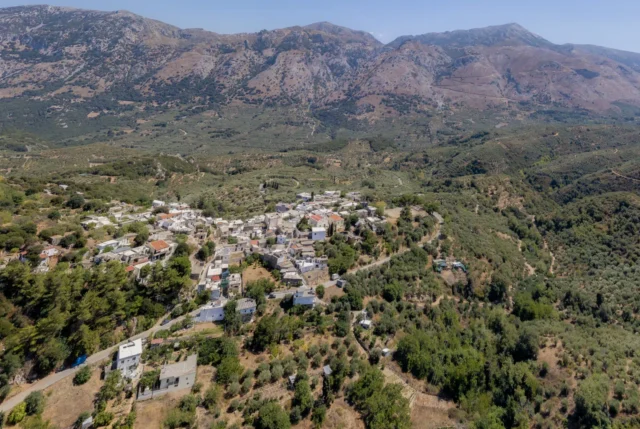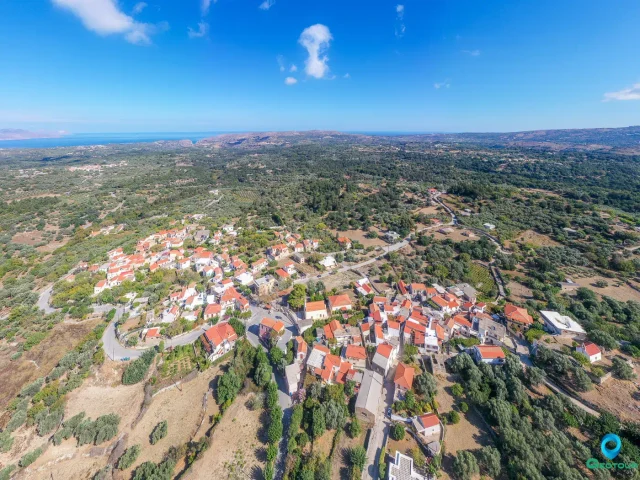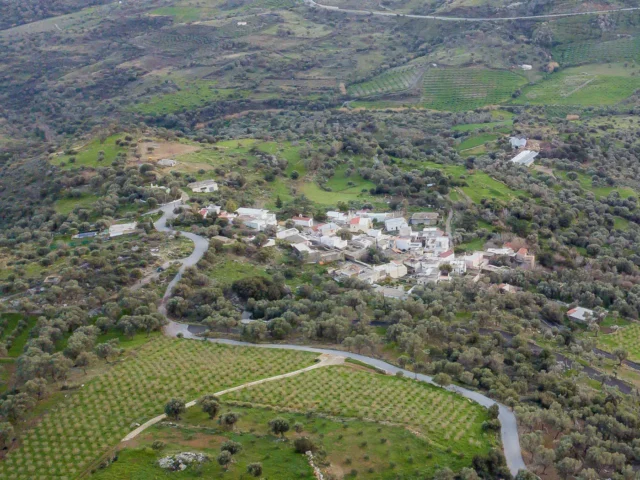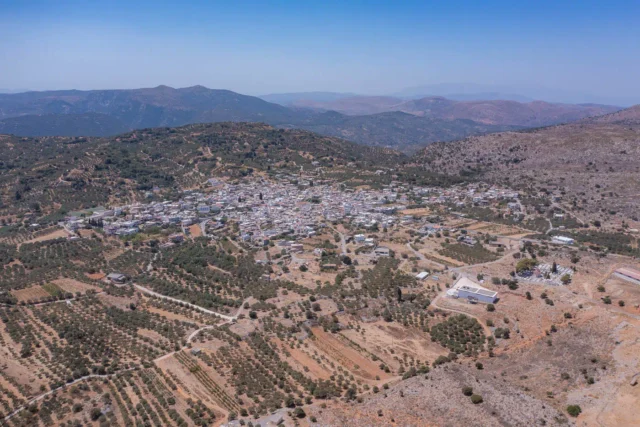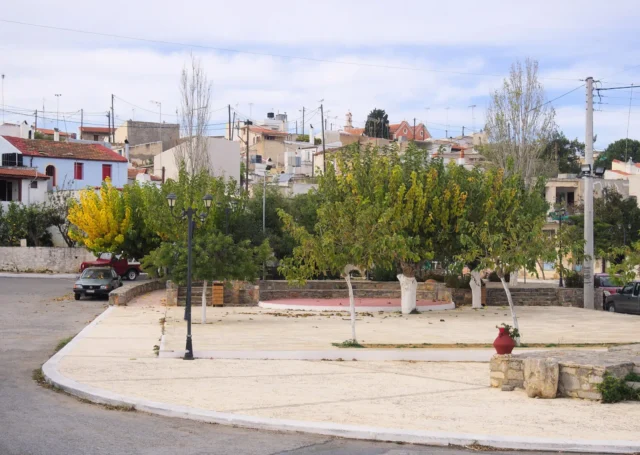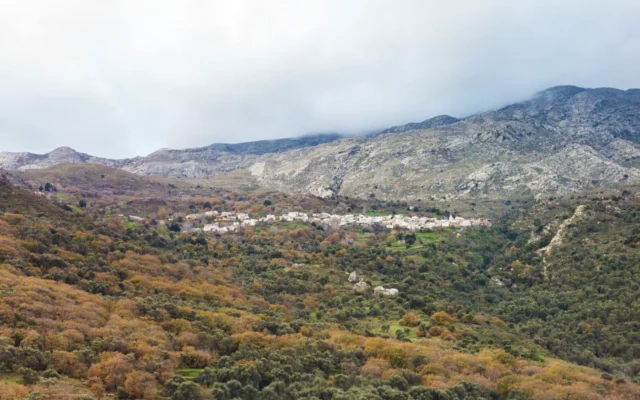829
listings found
Categories
Active filters:
Zoforoi, Minoa – Pediada
Zoforoi is a settlement located in the Heraklion regional unit on the island of Crete, Greece. It belongs to the Municipality of Minoa - Pediada
Askoi, Minoa – Pediada
Askoi is a settlement located in the Heraklion regional unit on the island of Crete, Greece. It belongs to the Municipality of Minoa - Pediada
Kastamonitsa, Minoa – Pediada
Situated 42 kilometers southeast of Heraklion on the western slopes of the Dikti mountains at 520 meters, this village holds a strategic position controlling access to the Lasithi Plateau. First inhabited after 961 AD, it was evacuated by Venetians in 1364 due to rebellions, repopulating after 1514. It appeared in the 1834 census (35 families) and saw significant Ottoman-era conflicts, including the 1823 battles and the 1841 Battle of Mesada. Key landmarks include the Venetian-era Church of the Dormition of the Theotokos, the 1890 Church of Agia Kyriaki, Roman aqueduct remnants, and Mesada with the Agios Georgios church. The village was active in WWII Cretan resistance. Population declined from 516 (2001) to 220 (2021). It remains active with agriculture and some tourism.
Vistagi, Amari
Vistagi is a settlement located in the Rethymno regional unit on the island of Crete, Greece. It belongs to the Municipality of Amari.
Monastiraki, Amari
A traditional settlement in the Amari Valley, 37 km from Rethymno, at the foothills of Mount Kentros. Its name originates from a Byzantine monastery of the Virgin Mary mentioned in Venetian acts (1597-1613). The village's history is highlighted by a significant Old Palace period Minoan palace at Kokkinos Harakas. It was active in the Cretan resistance during WWII. Notable churches include the 14th-century Michael the Archangel and the 15th-century frescoed church of Agios Georgios.
Roustika, Rethymno
Located 21km SW of Rethymno, Crete, at 290m, its name may stem from Arabic "Roustak" or Latin "rusticus." A traditional settlement (Cat. II), awarded "cleanest organized traditional settlement" in 2005. Key sites include the Venetian-era Prophet Elias Monastery, a revolutionary center where Crete's Historical Archive was hidden in WWII, and the Church of Panagia and Sotiros Christos with 1381 frescoes funded by Georgios Vlatas. The Anestis & Manolis Anagnostakis Cultural Center is in the poet's donated family home. Site of the 1821 Battle of Roustika (Battle of Zouridi), a key Greek victory over Ottoman forces led by Glymid-Alis.
Nithavri, Amari
Nithavri is a settlement located in the Rethymno regional unit on the island of Crete, Greece. It belongs to the Municipality of Amari
Choumeriakos, Agios Nikolaos
Choumeriakos is a settlement located in the Lasithi regional unit on the island of Crete, Greece. It belongs to the Municipality of Agios Nikolaos
Latsida, Agios Nikolaos
Latsida is a settlement located in the Lasithi regional unit on the island of Crete, Greece. It belongs to the Municipality of Agios Nikolaos
Kastelli, Agios Nikolaos
Kastelli is a settlement located in the Lasithi regional unit on the island of Crete, Greece. It belongs to the Municipality of Agios Nikolaos
Orne, Agios Vassilios
Orne is a settlement located in the Rethymno regional unit on the island of Crete, Greece. It belongs to the Municipality of Agios Vassilios
Limenas Chersonissou, Chersonissos
Limenas Chersonissou, or Port of Chersonissos, in Crete, is a coastal town with a rich history. It was the site of the ancient city of Chersonisos, with Minoan roots, flourishing during the Roman and early Byzantine periods. Evidence of this past includes ruins of a temple to Britomartis Artemis, a Roman port, aqueduct, theater, and early Christian basilicas. The town later served as a Byzantine bishopric. Today, Limenas Chersonissou is a popular tourist destination known for its beaches, vibrant nightlife, and archaeological sites. The town has numerous services and is a center for tourism, olive growing, viticulture, and vegetable cultivation. Churches like the Annunciation of the Theotokos and Agia Paraskevi at Kastri are located there.
Mochos, Chersonissos
Mochos is a settlement located in the Heraklion regional unit on the island of Crete, Greece. It belongs to the Municipality of Chersonissos
Magoulas, Lasithi plateau
Magoulas is a settlement located in the Lasithi regional unit on the island of Crete, Greece. It belongs to the Municipality of Lasithi plateau
Plati, Lasithi plateau
Plati is a settlement located in the Lasithi regional unit on the island of Crete, Greece. It belongs to the Municipality of Lasithi plateau
Smari, Minoa – Pediada
Village in Crete, Greece. Inhabited since the Minoan period. Population 418 (2001).
Lampiotes, Amari
Lampiotes is a settlement located in the Rethymno regional unit on the island of Crete, Greece. It belongs to the Municipality of Amari
Drygies, Amari
Drygies, a small village in the Amari Municipality of Rethymno, Crete, has historical mentions dating back to Francesco Barozzi in 1577. 1 Venetian censuses of 1583 recorded its inhabitants and corvée labor. The village was later noted in the 1834 Egyptian census and the 1881 Greek census. Part of the Ano Meros community for a significant period, Drygies faced destruction by German forces in 1944 following the Kreipe abduction, though villagers evacuated beforehand. The village church is dedicated to the Annunciation. Nearby features include the scenic Smiliano Gorge with waterfalls, the natural beauty of Platys Potamos, scattered chapels, and an ancient olive grove with uniquely shaped trees, near which lies the Byzantine Chapel of Agios Nikolaos with unrestored frescoes. Population figures show a decline from 92 in 1900 to 26 in 2011.
Ano Meros, Amari
Ano Meros is a settlement located in the Rethymno regional unit on the island of Crete, Greece. It belongs to the Municipality of Amari
Agios Ioannis, Amari
In Amari, Rethymno, 56km from Rethymno city (370m alt.), near Platy & Xife rivers crossed by old bridges like Manouras (Egyptian era, preserved). Venetian records include Barozzi (1577, S. Z(uann)e Chiliaru) & Kastrofylakas (1583, S. Giovanni Ghliafu). Kartsali has unexcavated Minoan Megaron remnants; Aigianniiotiki korifi features varied period sherds and possible 5th C. basilica ruins. The cemetery Church of Agios Ioannis, its namesake, shows 14th & early 15th C. frescoes (Nativity of John the Forerunner), suggesting a c.1285 monastery katholikon. The parish church Agioi Tesseres dates to the late 19th C. A primary school operated from 1899-1986. The village festival is on August 29th. Noted native: Emmanouil Papadogiannis, Greek Minister (1948-1950). It has been a community seat since 1925.










